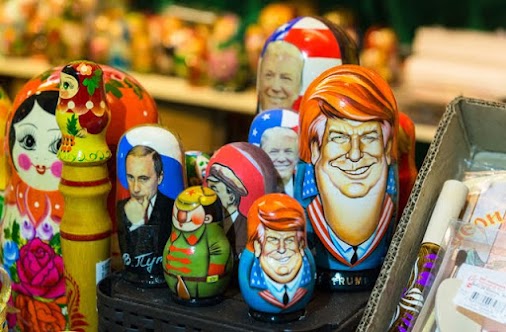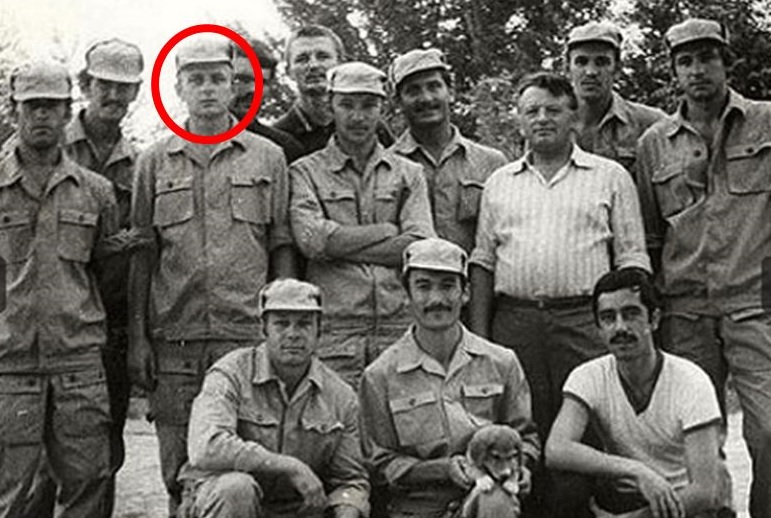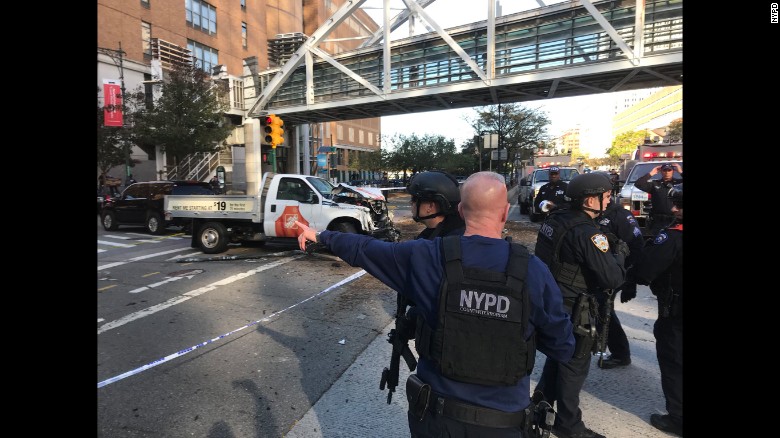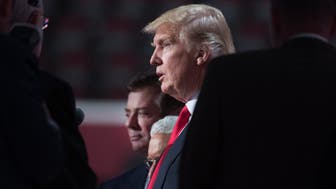Jared Kushner departs a closed-door meeting with the members of the House Intelligence Committee investigating Russian interference with the US election, on July 25, 2017. (Reuters / Jonathan Ernst)
It’s no longer difficult to believe that Donald Trump’s data and research team, including his son-in-law, Jared Kushner, and Cambridge Analytica, helped the Russians use Facebook, Twitter, and other social platforms to target American voters last year. In fact, that possibility is sure to be one focus of Robert Mueller’s relentless Russiagate inquiry.
With the
indictment and house arrest of Paul Manafort, Donald Trump’s former campaign manager, and Rick Gates, Manafort’s deputy and business partner, Mueller’s special-counsel investigation is drawing closer to the White House. And, because of
Manafort’s tangled ties to Russian and pro-Russian Ukrainian oligarchs, it draws Mueller closer to the question of whether there was collusion between Trump’s campaign and Moscow. Even more interestingly, Mueller has reached a plea agreement with
George Papadopoulos, a member of Trump’s foreign-policy team in 2016, who reported to then-Senator Jeff Sessions, now the US attorney general. For months last year, according to Mueller’s legal filing, Papadopoulos maintained contact with a range of Russians, who promised to deliver “dirt” on Hillary Clinton, including “thousands of emails.” And Papadopoulos discussed all this—including his efforts to arrange a meeting between Trump and Vladimir Putin—with top campaign officials, including at least once in the presence of Trump himself.
Russia’s use of social-media and other Internet resources was extensive during the 2016 US election. Evidence uncovered so far indicates that the Russians sought to stir up and exacerbate racial, religious, and political divisions in a manner designed to undermine Hillary Clinton’s campaign. As I
reported in Part I, executives from Facebook, Twitter, and Google will appear jointly on November 1 at an open hearing of the Senate Select Committee on Intelligence (SSCI), as several members of Congress are backing legislation to regulate Internet political advertising.
But if we know, at least in rudimentary form, what the Russian-backed bots and trolls did last year, we don’t know yet whether or not they had help. In the opinion of the two senators leading the SSCI investigation, it’s
an open question as to whether there was collusion between Russia and the Trump campaign. But many wonder: How did the Russians know when and where to place their ads, whom to target, and which voters might be persuadable?
Mike Carpenter, who served as assistant secretary of defense on Russia during the Obama administration, is one. “Could they have hired a warehouse full of people in Moscow and had them read Nate Silver’s blog every morning and determine what messages to post to what demographics? Sure, theoretically that’s possible,” he
told Vanity Fair. “But that’s not how they do this. And it’s not surprising that it took Facebook this long to figure out the ad buys. The Russians are excellent at covering their tracks. They’ll subcontract people in Macedonia or Albania or Cyprus and pay them via the dark Web. They always use locals to craft the campaign appropriately. My only question about 2016 is who exactly was helping them here.”
As long ago as this past July, members of Congress and the Department of Justice were thinking along the same lines, according to an investigative report
by McClatchy that month. “I get the fact that the Russian intel services could figure out how to manipulate and use the bots,” Senator Mark Warner, vice chair of SSCI, told a podcast cited in the McClatchy report. “Whether they could know how to target states and levels of voters that the Democrats weren’t even aware [of] really raises some questions.… How did they know to go to that level of detail in those kinds of jurisdictions?” Among the targets chosen by the Russians placing ads were women and African-Americans in Wisconsin and Michigan, two critical swing states won by Trump last November, McClatchy reported. Added Warner, “The Democrats were too brain dead to realize those states were even in play.” So how did the Russians figure that out?
According to McClatchy, Congress and the DOJ are “focusing on whether Trump’s campaign pointed Russian cyber operatives to certain voting jurisdictions in key states—areas where Trump’s digital team and Republican operatives were spotting unexpected weakness in voter support for Hillary Clinton.” Trump, in a series of tweets on October 21, didn’t challenge the reports that Russia paid for ads on social media, but he minimized their impact, saying that he “keep[s] hearing about ‘tiny’ amount of money spent on Facebook ads” and adding: “Facebook was on [Clinton’s] side, not mine!” And he didn’t address the question of whether or not the Russians may have had assistance from his campaign.
But several former members of the US intelligence community appear to believe that the Russians did get such help. “It is not intuitively obvious that they could have done this themselves,” former CIA director Michael Hayden
told Bloomberg recently. And Michael Morell, a former acting director of the CIA, told Bloomberg that if the Russians weren’t given covert help from the campaign, then they must have obtained it by stealing it, say, through hacking. “They do not have the analytic capability to do that themselves,” Morell said.
If there’s anywhere to look for possible collusion, it would be at Jared Kushner, President Trump’s son-in-law, and more broadly at the Trump campaign’s sophisticated data-mining efforts, including the part run by the firm Cambridge Analytica. It was Kushner who, quietly and behind the scenes in 2016, managed the campaign’s high-tech data operations and served as liaison to Cambridge. So far, no concrete evidence has turned up to implicate Kushner and Cambridge, but for Robert Mueller, the special counsel looking into Russiagate, they’re potentially juicy targets.
Writing
for Just Security, Max Bergmann, a former State Department official now at the Center for American Progress, noted that Kushner and Brad Parscale, the Trump campaign’s data person, managed a highly sophisticated voter-targeting effort that often concentrated on using so-called “dark posts” that targeted individual voters and small sets of voters, and that Cambridge Analytica played a key role in helping them do so. “If the Trump digital team—powered by Cambridge Analytica and other tech contractors—shared their data and content with Russian operatives, the Russians could have acted as a force multiplier for the Trump campaign,” wrote Bergmann. “In effect, the Trump campaign could have ‘painted the targets’ in initial ad buys for the Russians to follow-on and carpet bomb with their own ads.… Imagine being able to call on the resources of a nation state to do targeted ad buys.”
Cambridge Analytica, or CA, is a firm that in 2016 was closely tied to, and partly owned by, two people in Trump’s innermost circle: Steve Bannon, the former Breitbart chief who served until August as chief strategist in the White House, and Robert Mercer, a billionaire hedge-fund mogul who was one of the principal financiers behind the campaign. And Cambridge, which operates worldwide (it
just announcedplans to expand its reach to China), has significant experience in Russia already. Via a
report in the
Daily Beast, we learn that
The Guardian’s Sunday
Observer pulled back the curtain on links between Cambridge and its parent firm, the London-based SCL, and Russia. “Multiple Cambridge Analytica sources have revealed other links to Russia, including trips to the country, meetings with executives from Russian state-owned companies, and references by SCL employees to working for Russian entities,” reported the
Observer.The same report added that the House Permanent Select Committee on Intelligence (HPSCI) is investigating CA’s activities, and that Cambridge is cooperating with the inquiry.
But it’s Kushner who could unlock the mystery. The president’s son-in-law is already in deep trouble, not only because of questionable
real-estate deals, some involving Russian oligarchs, but because it was revealed this past summer that he participated in a meeting in Trump Tower in June 2016 with a team of Russians who’d promised Donald Trump Jr. they would deliver dirt on Hillary Clinton that came straight from Russia’s state prosecutor. If Mueller can come up with evidence to charge Kushner with criminal wrongdoing, even if it has to do with his New York real-estate empire and money laundering, perhaps Kushner could be persuaded to seek a deal by turning over evidence about collusion with Russia.
In an
interview with
Forbes last November, Kushner spoke expansively about his work with Cambridge and the data gurus. “I called some of my friends from Silicon Valley, some of the best digital marketers in the world, and asked how you scale this stuff,” he told
Forbes. “They gave me their subcontractors.” After running some tests, Kushner was ready. “I called somebody who works for one of the technology companies that I work with”—almost certainly Cambridge Analytica—“and I had them give me a tutorial on how to use Facebook micro-targeting.” Kushner, according to
Forbes, then started plugging it all into the Republican National Committee’s data machine, and he asked Cambridge Analytica to help create sophisticated maps showing how Trump might most effectively appeal to voters on issues such as immigration.
Though much is yet unknown, it does appear that the Russian-backed ads on Facebook were carefully targeted. “A number of Russian-linked Facebook ads specifically targeted Michigan and Wisconsin, two states crucial to Donald Trump’s victory last November, according to four sources with direct knowledge of the situation,”
reported CNN on October 4. “Some of the Russian ads appeared highly sophisticated in their targeting of key demographic groups in areas of the states that turned out to be pivotal, two of the sources said. The ads employed a series of divisive messages aimed at breaking through the clutter of campaign ads online, including promoting anti-Muslim messages, sources said.”
CNN added: “As part of their investigations, both special counsel Robert Mueller and congressional committees are seeking to determine whether the Russians received any help from Trump associates in where to target the ads.”
Sometimes the Russian actions were marked by impressive depth. Take, for example, the Twitter account @Ten_GOP, which
successfully posed as an account run by the Tennessee Republican Party—so successful, in fact, that its tweets were retweeted by Trump insiders Michael Flynn and Roger Stone. Three times, once in 2016 and twice in 2017, the real Tennessee GOP
warned Twitter that the account was fake, but to no avail. (The first reports on @Ten_GOP came from a Russian magazine,
RBC, that has carried groundbreaking reports on the work of the secretive Internet Research Agency, or IRA, the St. Petersburg firm behind many of the bots, trolls, and fake Facebook accounts activated during the 2016 campaign.) And @Ten_GOP managed to get its dirty work picked up in the mainstream media.
According to The Washington Post, “A tweet by @Ten_GOP on Oct. 10, 2016, the day after the second presidential debate, was featured in an online People magazine article on prominent online reactions. ‘Trump slaughtered Hillary,’ tweeted @Ten_GOP, with the words followed by images of knives and the hashtag #debate.”
An important case study showing how the IRA and its allies worked in 2016 was reported at length
by Buzzfeed, again based in part on a report by
RBC. Fake accounts, including one called Black Fist, actually tricked real, live Americans into taking part in protests and self-defense classes in the United States, via the “American Department” of the IRA. Claiming to be a site organized “by black for black,” the Black Fist website contacted people through a persona calling itself “Taylor,” who told men such as Omowale Adewale, an activist and MMA fighter in New York, to start self-defense classes and to videotape and photograph them. Incredibly, Adewale was even paid as much as $320 per month.
“‘When I started to ask questions, that’s when they had somebody who wanted to train with me, so they could start their own class,’ Adewale said, but that person was a martial arts novice, an oddity for a self-defense class,” reported
Buzzfeed. “According to Adewale, Taylor soon stopped contacting him altogether. The classes stopped in May. But Adewale said he didn’t realize that the situation was connected to Russia until recent reports began to connect Russian efforts to sway the election through Facebook, Twitter, and—in particular—targeting
black organizers.”
As reported here
in Part I and in a
previous piece for
The Nation on Russia’s use of Facebook, many of the ads and fake accounts were aimed at exacerbating America’s most volatile and sensitive divisions. Malkia Cyril, founder and executive director of the Center for Media Justice and a member of the Black Lives Matter network in Oakland, California, tells
The Nation that all of this sets a dangerous precedent and requires urgent action by the government to make sure it stops.
“Let’s be clear—this is not simply about what Russian operatives did,” says Cyril. “This is about the collusion, knowing or unwitting, between these operatives and social-media platforms; about the collusion between global right-wing forces within the United States, Russia and beyond, using disinformation tactics historically used by our own CIA, to undermine democracy here and abroad.
“It’s clear that there are good people at Facebook, Twitter, Google, and other companies impacted by fake news and disinformation campaigns of the global right—but, as companies, they appear more concerned with selling ads than defending democracy. These companies have made some improvements, but those improvements have come too slow and too late—the presidential election was compromised already. Now we need to look forward to future elections and ensure that these platforms are ready to protect the American public from any threats, foreign or domestic, that seek to undermine the electoral process. I don’t believe we can expect this administration to protect democracy in any way, but we should demand that Congress take a stand.”

 Louis Armstrong Ochi Chernyie (Dark eyes) https://t.co/foG2eqcqY9 via @YouTube
Louis Armstrong Ochi Chernyie (Dark eyes) https://t.co/foG2eqcqY9 via @YouTube

















